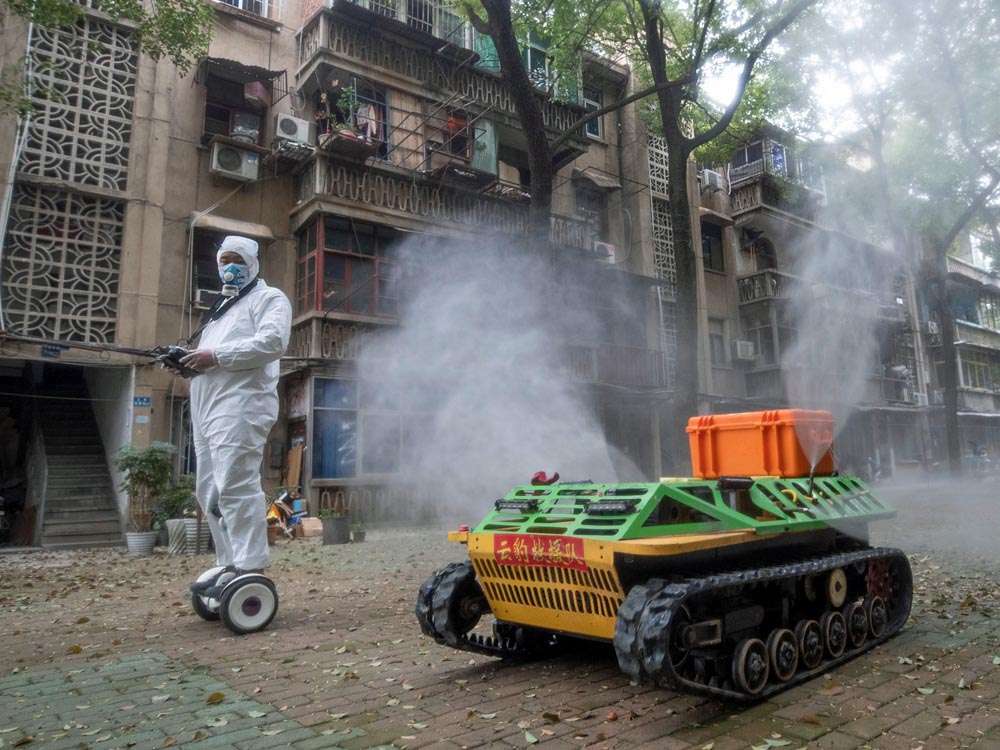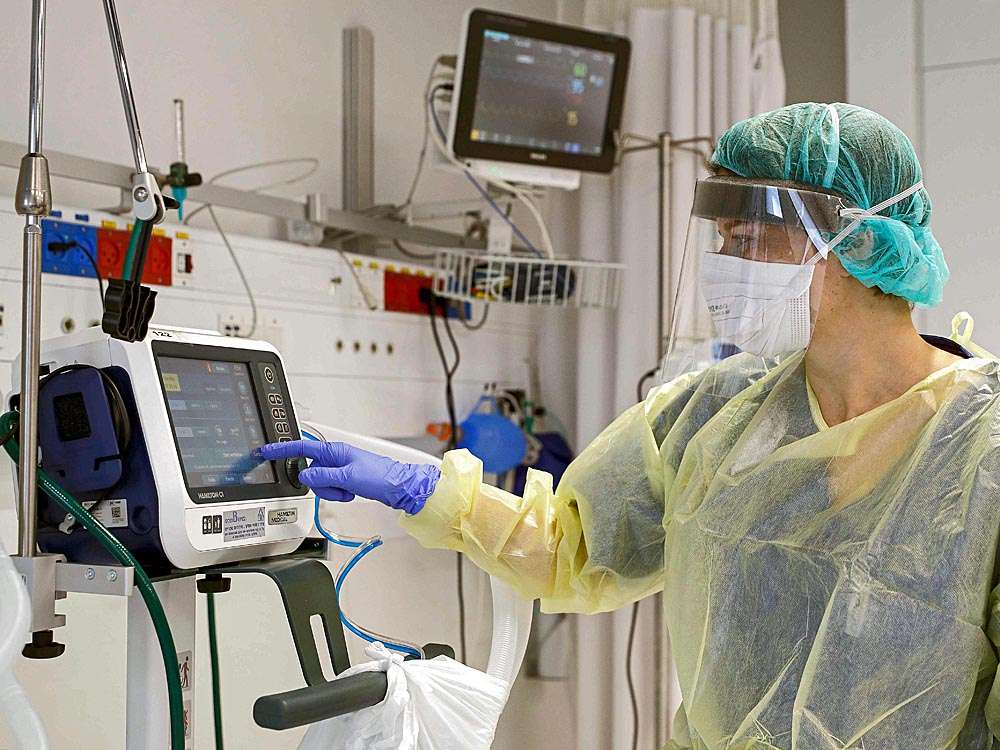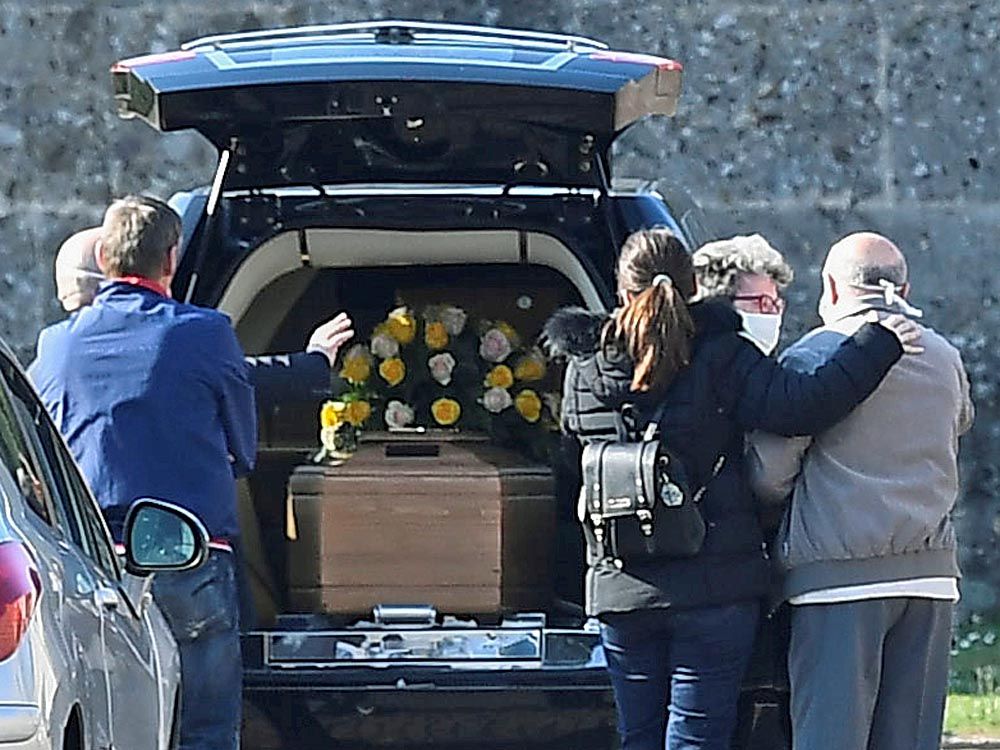Despite all the cheap rhetoric of protecting the most vulnerable, seniors and those with pre-existing medical conditions (who really are the MOST vulnerable) are actually being targeted for the dung heap under the euphemism of ‘triage’ by medical death squads in all but name only. As bad as all that is, it’s consistent with what has already been going on in most nursing homes for decades. Residents are visibly obsequious and fawning toward medical staff because they fully realize the difference between life & death can be as slight as how fast a nurse/CNA responds to the bedside help button. The contemporary COVID-19 triage protocols are even worse. If you’re over 65. and become infected with the virus, without an ICU slot, it’s a 95% likelihood YOU DIE! You’re deemed to be past your pull date…even if you’ve never missed a health insurance premium payment. You might as well hitch a ride on the nearest ice floe.
Imagine (not much of a stretch under current circumstances) the police or fire dept. refused to respond to your emergency because you were over 65 and they were out of water…had been low on water FOR YEARS! How would you feel if the perp who murdered your spouse was only sentenced to a few months because the victim was over 65? What if the library wouldn’t reserve books for you because your remaining years were discounted? Should seniors be permitted to vote or their ballots devalued proportionate to their actuarial life expectancy? Like infants, should seniors have fewer civil/human rights than their contemporaries? If so, where is the breakdown of their social contract’s demise codified? This all smacks of the ‘ethics’ of Nazi death camp procedures where the youngest, eldest and infirm were sent to the ovens first. Our hospitals have begun to resemble Nazi inspired abattoirs. The thought provokes dread rather than hope, their saintly nomenclatures now feel like obscenities.
In the Chinese city of Wuhan, the epicenter of the coronavirus pandemic, doctors made life-or-death decisions last month when 1,000 people needed ventilators to support their breathing, but only 600 were available.
In Iran, where numerous high-level officials have been infected, doctors sought unsuccessfully to get the international community to lift sanctions so they could purchase more of the lifesaving machines.
And in northern Italy, doctors last week took the painful step of issuing guidelines for rationing ventilators and other essential medical equipment, prioritizing the young and others with the best chance of survival.
Such tough choices couldd be ahead for the United States, a nation with limited hospital capacity and grim epidemiological projections estimating that as many as 40 per cent to 60 per cent of the country’s population of 327 million could eventually become infected.
“We are looking at a new war no one as seen before. We have never fought a virus like this with this potential consequence,” New York Gov. Andrew Cuomo said Sunday afternoon. He warned, “It is only a matter of time before ICU beds are full.”
The situation in the U.S. is more complicated than in many other nations due to this country’s diversity, deep political and economic divisions and decentralized decision-making. The Centers for Disease Control and Prevention has laid out general principles for how to allocate scarce resources in a pandemic response plan, but leaves most of the details to individual states and institutions. The result is a patchwork of approaches – with some states proposing broad ethical principles to determine need, and others assigning priority scores using detailed algorithms for patients based on their condition, preexisting health problems and age.

COVID-19 Robotic Sterilizer
In an extreme outbreak, rationing would raise tortured questions: Should someone with a terminal cancer or serious heart disease get more or less priority? Should the CEO of a hospital or a health worker be able to jump the queue? What about pregnant women? How should prisoners or undocumented immigrants be considered? All things being equal, would a lottery or coin flip be an equitable approach?
“These are really hard decisions,” said George Anesi, a critical-care specialist at the University of Pennsylvania. “In a public health emergency, you shift from a focus on individual patients to how society as a whole benefits and that’s a big change from usual care.”
For now, the number of U.S. cases is limited – 3,020 cases of confirmed coronavirus infections and 60 deaths as of Sunday – and hospitals still have capacity to handle more sick if the virus’s spread is slowed using strategies such as social distancing. But the situation is evolving quickly and experts say it’s impossible to predict how many people might become seriously ill and whether they could overwhelm the system’s capacity, as happened in parts of Italy, Iran and China.
Many of the state plans were written following the global devastation of the SARS outbreak in 2002 and Hurricane Katrina in 2005. Some are still in draft form, and none has never been activated in a real crisis. State health officials and hospital leaders say they have been urgently updating them in recent days to address the unique aspects of the pandemic.
Arthur Caplan, a bioethicist at NYU Langone Medical Center who has served on numerous national and international panels addressing resource allocation during Zika, Ebola, and avian flu outbreaks, said no single approach is more “right” than others. But he said that transparency is critical as the crisis develops.
“The public will accept triage and rationing if they understand the process,” Caplan said. “But if it’s secretive or looks like favoritism to politicians or the rich, they will not accept that – whatever the rules are.” [Oh, really? NOT here–NOT if you’re excluding me and my spouse and my neighbors and classmates–NOT by a long shot!] Seniors have no less right to life than any human!

While much about covid-19, the disease caused by the novel coronavirus, is still a mystery – its origin, how exactly it spreads – one thing doctors are sure about is how it kills. It attacks the lungs, leading to respiratory distress. And in these situations, access to oxygen therapy with a mask or nasal cannula for milder cases, or to mechanical ventilation for more severe illnesses can give a patient’s body time to fight the virus and mean the difference between life and death.
The earliest reports from China estimated that about 6% of patients needed ventilator support. But those numbers were misleading, experts says, because so many people never made it to hospitals, or were simply unable to gain access to ventilators. About 25% of those who died had been placed on ventilators.
Newer information from Italy in a March 4 email from University of Milan physicians Maurizio Cecconi, Antonio Pesenti, and Giacomo Grasselli to other critical care doctors around the world showed a much higher number – 10% – requiring mechanical ventilation.
“This happens like a bomb that explodes,” Grasselli said in an interview. “It happens all of a sudden and keeps growing and growing.”
Grasselli said that in his region there were barely enough ventilators and beds to go around but that many patients required 15 days to three weeks of ventilator support. “Clearly when resources are not enough for the number of patients, you have to prioritize patients who have the highest chance of survival,” he said.
The Italian critical-care society sanctioned the idea of placing age limits on access to intensive treatments, and said doctors should “privilege greater life expectancy.”

Angelo Pan, head of infectious disease at Italy’s Cremona hospital, said the high number of patients needing ventilators – about 25% of the 170 people with coronavirus at his hospital in early March – was straining resources.
“I don’t want to be too pessimistic,” Pan said, “but I think this is going to be a problem for all the health care systems.”
By many accounts, the United States is ill-prepared for a such a situation.
A 2005 federal government report estimated that in the event of a pandemic like the 1918 flu, the nation would need mechanical ventilators for 740,000 patients. Currently 160,000 ventilators are available for patient care, with at least an another 8,900 in the national stockpile, according to a February estimate by the Center for Health Security at Johns Hopkins.
Hospital officials and doctors interviewed in several states emphasized that rationing is a last resort and that they have begun to experiment with other ways to increase capacity.
Initially, they said, patients would likely be transferred from more crowded, urban facilities such as Johns Hopkins in Baltimore and the University of Pennsylvania Health System in Philadelphia, which routinely operate at 80% to 90% capacity, to community or rural hospitals that may have more intensive-care beds.
If the number of victims surges beyond that capacity, they say, they may try novel approaches such as having two patients on one ventilator. Tubing for ventilators, which is usually thrown out, could be sanitized and reused. Other types of hospital equipment, such as those used for sleep apnea, could be repurposed as makeshift ventilators. Only if those strategies fail and the sick continue to exceed capacity would rationing protocols be put into place. – – –
In normal times, U.S. hospitals operate mostly on a principle of first come, first served – “like getting concert tickets” as one clinician put it. In a mass casualty situation, this all goes out the door. Americans generally agree that in a crisis, the goal should be doing the greatest good. But that concept has shifted depending on the era, setting and culture. During World War II, the greatest good might have been getting soldiers back out to the front lines. When the Titanic hit an iceberg, it was all about saving the women and children, while the men were left to die on the sinking vessel. U.S. ethicists have historically talked about saving the most lives as doing the greatest good. But with greater recognition these days of factors such as quality of life and burdens on the health-care system, the discussion has shifted from maximizing lives saved to maximizing life years. Saving one child may outweigh the “good” of saving two elderly adults, according to the cold arithmetic of life expectancy. If a patient is not getting better, has little path to survival, at what point are we willing to move an intervention rather than lose two lives? Lee Daugherty Biddison, an associate professor of pulmonary and critical care at Johns Hopkins Medicine, said the idea is to give priority to those “most likely to live a long life after they got though the current epidemic”: “The thinking is, ‘Am I going to survive the flu to die of advanced cancer in three months?’ ”
Deciding between lives saved and life years is among the most tortured decisions that doctors will ever make, Anesi said. “Different value steps could push people to different decisions,” he said. Another tough call would be to take a ventilator away from one patient and move it to another, who may benefit more.
“If a patient is not getting better, has little path to survival, at what point are we willing to move an intervention rather than lose two lives?” he said.
Such questions are addressed in many state pandemic strategies, including New York state’s highly regarded 52-page planning document – which notes that the U.S. Department of Homeland Security “views pandemic influenza as both the most likely and most lethal of all threats facing the United States.”
Philip Rosoff, professor emeritus of at Duke University’s medical school and chair of its hospital ethics committee from 2005 to 2019, compared the New York strategy to a battlefield triage plan – except that in the latter there is a finite beginning and a reasonably finite end. But in the case of covid-19, he said, “no one really knows if and when this really ramps up.”
The plan’s basic outlines are simple and “fairly draconian,” Rosoff explained. “If you are in respiratory failure and there is a ventilator available and an ICU bed, and you meet certain medical criteria, you go on the ventilator. You have a certain amount of time to get better. If you don’t, we’ll take you off and give it to someone else.”
“If you take it off someone who is not doing very well,” he added, “the reality is they die.”
To avoid conflicts of interest and the emotional toll of life-or-death judgments, many state plans call for a senior, supervisory doctor or panel of doctors – similar to a “three wise men” protocol developed in Britain for this scenario – who is different from the one caring for the patient.
But state and hospital plans often vary widely in how they deal with issues such as a patient’s age.
Some states do not set specific age cutoffs for ventilators during rationing, while others explicitly exclude access for older people, with access barred to those ranging in age from 65 to 85. A Minnesota panel, for instance, recommended prioritizing children over adults, and young adults over older adults, while the New York group did not use age as a criteria alone.
Most plans include a list of serious conditions that would exclude someone from getting a ventilator if rationing were in effect, and many conditions are more common in the elderly, such as severe cardiac issues, kidney failure, and metastatic cancer.
In Maryland, avoiding discrimination is a major concern for those who drafted the guidelines, Daugherty Biddison said. She explained that disasters – epidemics, wars and attacks – tend to exacerbate society’s inequalities and in discussions about how to ration resources, there’s been tension among politicians, the public and ethicists about how to protect vulnerable groups.
A person with advanced diabetes is likely to have a shorter life span than someone with well-controlled diabetes. However that may be because the second person has greater access to medical care.
“So if you were to say, ‘Look, you are unwell because of diabetes and you’re also not going to get a ventilator,’ you are double penalizing someone who didn’t have access to care,” Daugherty Biddison said.
So while New York’s guidelines exclude people with renal failure from getting ventilator support in an emergency, Maryland’s guidelines include them in the pool of people who would be eligible.
There’s also variation in whether health-care personnel get priority. New York’s working group felt strongly that health care workers should not be prioritized because the group is so large that it would result in denying access to everyone else, including children. – – –
The most painful cases, providers acknowledge, are situations in which a patient will be taken off a ventilator or will not get one.
Rosoff from Duke believes that part of planning for a larger coronavirus outbreak in the United States should involve ensuring comfort to dying people who will go without the benefit of advanced intensive care. Such situations could be especially agonizing as family members may be absent due to the risk of contagion.
“We have very effective means of making that a comfortable, peaceful death,” he said, citing things such as supplemental oxygen, morphine, chaplains and people trained to talk to those nearing death.
Daugherty Biddison said transparency about how care may be rationed in a pandemic situation may change how doctors talk with their patients about end-of-life decisions.
“I don’t think there will be a scenario where someone will say, ‘Do you want a ventilator or should I give it to a 6-year-old?’ That’s not going to happen,” she said. “But I do think if you’re in this situation, at least people can contextualize their stress on the system and can make a decision accordingly.”
– – – The Washington Post’s Loveday Morris in Lodi, Italy, Tiffany Leung in Hong Kong and Magda Jean-Louis contributed to this report.

